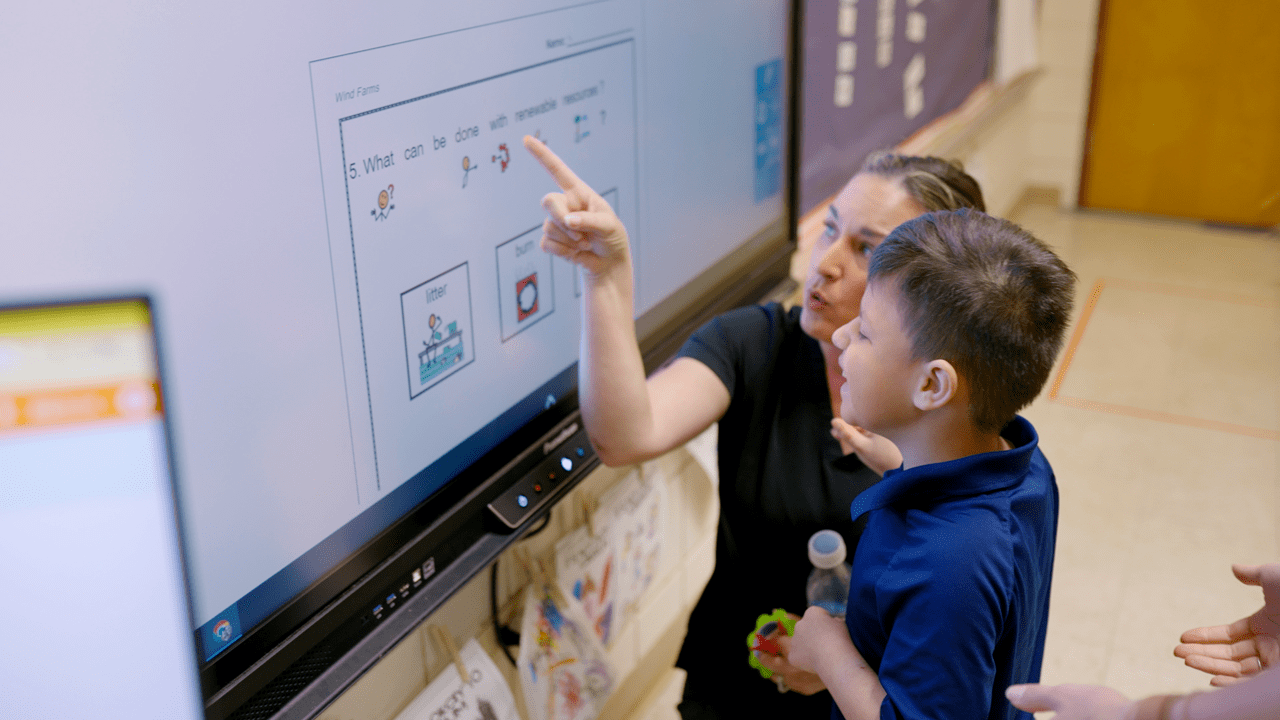Welcome to the fourth and final article in our series, Student Leadership throughout the IEP Process. In this article, we explore the idea of self-determination as it applies to unique learners and offer several strategies for teachers to use in the classroom. You can read more on this topic in these articles in the series:
Best Practices
Progression of Participation
Overcoming Barriers
What Is Self‑Determination?
Self-determination is a theory of human motivation, based on the belief that everyone has the right to make choices and manage their own life. Questions about what motivates us and ideas about innate psychological needs have been around for a long time. In 1985, psychologists Edward Deci and Richard Ryan drew upon existing research and formally introduced the theory of self-determination in their book, Self-Determination and Intrinsic Motivation in Human Behavior. Initially, the theory was focused specifically on how people are internally motivated and suggested that our needs for competence, connection, and autonomy drive us to grow and make changes.
Over the past 40 years, the theory of self-determination has expanded and is now applied across several fields, including psychology, management, sports, health, parenting, and education.
In education, the concept of self-determination is closely tied to social-emotional learning and growth mindset initiatives that empower students with self-advocacy, social, and healthy self‑regulation skills.
Teaching with self-determination in mind moves educators to give students choices wherever possible and allow them to take ownership of their learning. Self-determination also involves helping children develop self-awareness, assertiveness, creativity, problem solving, and goal setting—important life skills for all of us. Students with high levels of self-determination are driven to determine their own thoughts, feelings, behaviors, and actions within the school setting and later in life.
Self-Determination in Students with Special Needs
The theory of self-determination is particularly relevant to students with disabilities. Consider these strategies for teaching self‑determination:
Invite Students to Set or Contribute to Their Goals
This helps them track their progress as they make strides toward achievement. When students have a say in their goals, they are more motivated to work hard to achieve them.
Provide Intermittent Positive Feedback
Offering students periodic or unpredictable encouragement helps them feel more competent. When it’s not expected, the feedback feels especially meaningful.
Be Cautious in Using Extrinsic Motivation
Token economies have their place in behavior management, but it’s not productive to reward students for actions they are already taking. If students become dependent upon rewards like stickers or homework passes, they will feel less in control of their behaviors and their intrinsic motivation will decrease.
Emphasize Connection through Social‑emotional Learning Initiatives
You can create a safe and welcoming classroom environment with activities including group projects and after-school clubs and sports, and by maintaining a positive relationship with the student.
Offer Choices Within the Classroom Wherever Appropriate
This can include choices for how to spend free time, how to express one’s understanding of new content (e.g., written or verbal summary), and where to sit in the classroom, for example.
Teach Specific Skills
Help your students gain mastery in specific skills that are meaningful to them. For example, maybe your third-grade student is highly motivated to learn to count money so they can spend their weekly allowance on a new video game. The more learning and practice students get in a specific area, the more competent and self-determined they will feel. Further, seeing growth in one area will contribute to confidence and motivation to work hard in another area because they will see that their efforts matter.
Hold Students Accountable for Choices
If a student breaks a rule, allow them to experience the consequences of their actions. This is one important way to teach students to take responsibility for their behaviors. People with high levels of self-determination take credit for their successes and accept responsibility for their mistakes.
Explore Community Resources
Take advantage of local recreation and leisure activities, social services, employment training programs, and similar resources. It is empowering for students and families to feel like they know their way around their community and understand what kinds of supports and activities are available.
Self-Determination and the Student-Led IEP Process
In the 1990s, the Individuals with Disabilities Education Act (IDEA) recognized self-determination as a best practice for students with disabilities when it mandated student involvement in transition planning. Currently, students are required by law to be invited to IEP meetings starting at age 14 or whenever transition planning will be discussed. Incorporating students in transition planning promotes self-determination by encouraging them to set their own goals for the postsecondary setting and identify the knowledge and skills required to reach those goals.
While it is important to involve students in the IEP process during transition planning, including them in the process much sooner is recommended. Learning self-determination skills doesn’t happen overnight. Autonomy and competence exist on a continuum and students grow over a lifetime. It is best to start young!
Invite students to take a leadership role in the IEP process from a young age—even as young as kindergarten. Early self-advocacy skills in young children look different from those in older students with years of practice. But students who participate in the IEP process with guidance and continuity are the most successful at learning self‑determination.
Self-determined students are more likely to succeed in their postsecondary settings and beyond. Some students will transition from high school to a residential setting and have independent living goals. Others will move across the country to attend a four-year university. Either way, students who know what they want and how to get it are positioned to reach their personal goals and find satisfaction with their life choices.
Wrapping Up
Adopting a school- or district-wide vision for student-led IEPs means taking a stand for self-determination. It means recognizing the great potential of unique learners and respecting them as individuals capable of making important decisions and acting on their motivations. On one hand, choosing to prioritize student leadership throughout the IEP process is easy. Special education teachers and leaders everywhere want to encourage independence, self-advocacy, and confidence. On the other hand, committing to the process is a big investment. Teams must choose to set aside time for teachers and students to do the work of developing leadership skills. When this happens, student-led IEPs are one of the most powerful tools for equipping unique learners to advocate for themselves.



